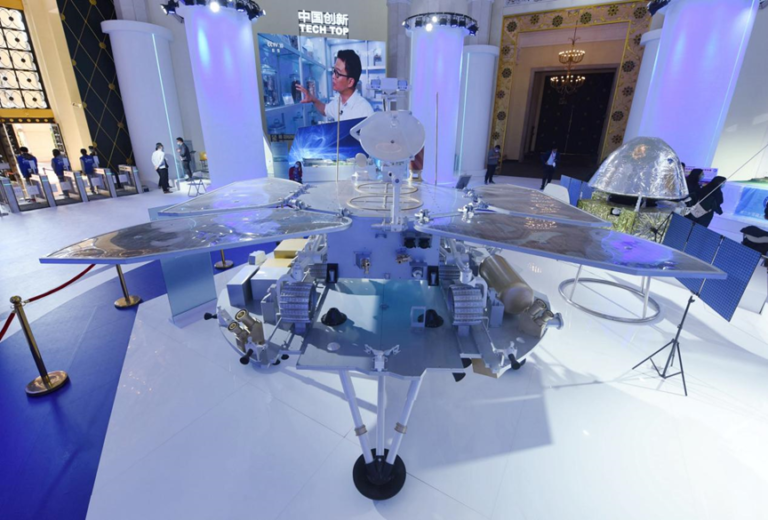
By Feng Hua, People’s Daily
The orbiter of China’s Tianwen-1 Mars mission, the country’s first artificial Mars satellite, lately sent back new images of the inspection area of the Zhurong Mars rover with a resolution of 0.5 meters when it traveled past the area again at the periareion, the point in the orbit that is closest to Mars. Track marks left by the Mars rover are clearly visible in the pictures.
On March 7, the orbiter also captured images of the Perseverance Mars rover sent by the U.S. National Aeronautics and Space Administration (NASA).
China’s Tianwen-1 Mars probe conducted precise braking near Mars and successfully entered orbit around the red planet on Feb. 10, 2021. Then, on May 15, 2021, it touched down at its pre-selected landing area on the northern hemisphere of Mars. Seven days later, the Zhurong Mars rover drove down from its landing platform to the Martian surface to search for signs of water and life.
As of March 24, 2022, the Tianwen-1 orbiter had been operating in orbit for 609 days at a distance of 277 million kilometers from Earth, and the Zhurong Mars rover had worked on the surface of Mars for 306 Martian days and traveled over 1.78 kilometers. Both the Mars orbiter and rover are functioning normally.

Zhurong also sent back selfies from Mars. Compared with the images taken shortly after it landed on the planet, the new photos showed a thin layer of dust had accumulated on its surface.
Considering that dust can reduce rovers’ power supplies, Chinese scientists specially designed the rover’s solar wing so that it can take multiple measures to offset the decline in its power generation efficiency caused by dust coverage.
The China National Space Administration said there is no need to employ such measures yet as the rover has sufficient energy to continue its exploration on Mars.
The Martian northern hemisphere is entering the autumn season, during which there will be frequent dust storms, as previous Mars exploration data suggested.
The engineering team of the Tianwen-1 mission has been constantly monitoring dust storms on Mars through images captured by the medium-resolution camera of the Tianwen-1 orbiter, which has detected dust activities above 60-degree latitude north of Mars since late January this year.
Pictures sent back by the orbiter showed that a local sandstorm occurred in this area in February 2022, during which typical surface features of the red planet were covered by a large amount of sand and dust and became indistinguishable.

According to the administration, no obvious dusty weather has been observed in the Zhurong rover’s inspection area.
So far, countries across the world have launched over 50 Mars probes, among which only 18 successfully landed on the planet, including Tianwen-1.
The orbiter of Tianwen-1 will continuously carry out remote sensing of Mars, focusing on obtaining high-resolution images of craters, volcanoes, canyons, dry riverbeds and other typical landforms and geological units.
By around 2030, China will carry out asteroid exploration, Mars sample return, Jupiter system exploration and other missions, with Mars exploration as the main task, according to the overall planning of the Planetary Exploration of China (PEC).










